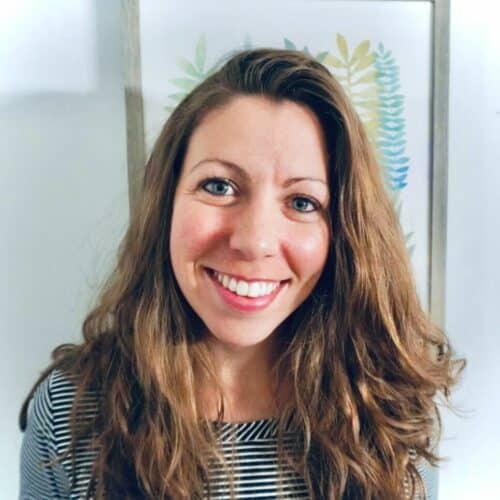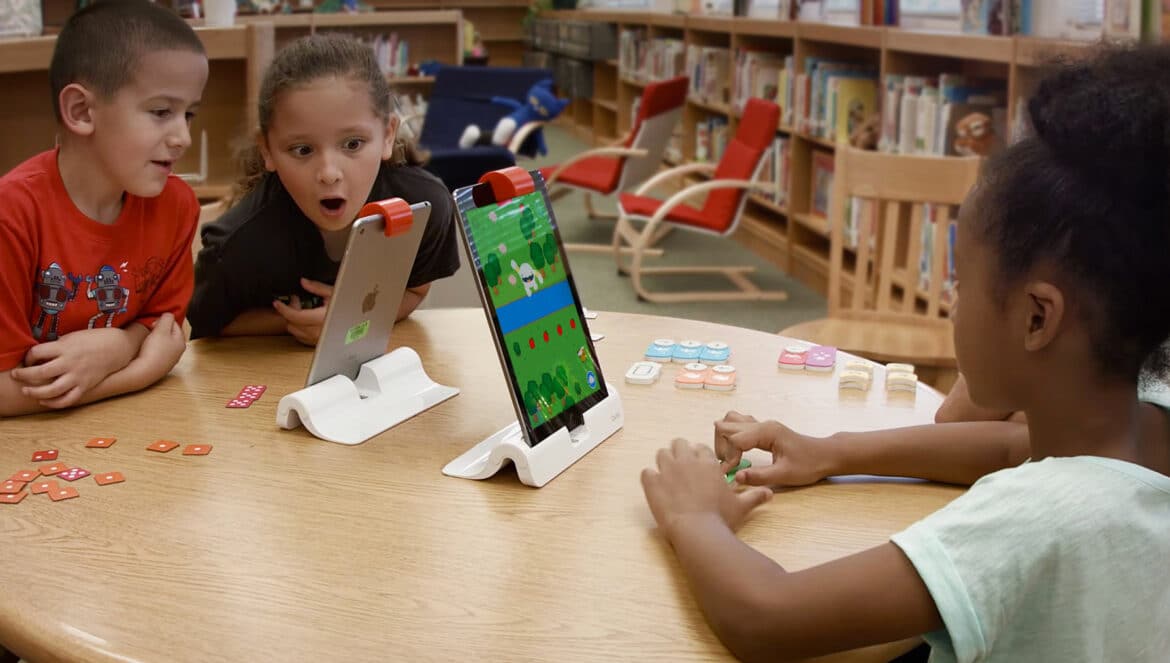Table of Contents
The engaging power of technology has transformed the way of the world, and for one Spanish teacher, phygital learning has completely rerouted her career path.
Lynair Miller, current library media services coordinator for grades preK–12 in Atlanta Public Schools (APS), was moving a teaching cart from classroom to classroom when she witnessed a fellow educator’s ability to deploy trailblazing educational technology in engaging and purposeful ways.
“The teacher was very tech-savvy and used a lot of different manipulatives, tools, robots and all kinds of things to get her kids engaged, and I was just enamored being in that classroom,” says Miller.
Education Trends Lead the Way
After completing her undergraduate degree at Clark Atlanta University, Miller returned to her home city of Baltimore to teach Spanish. But Atlanta called her back and, after eight years with APS, her interest in edtech led her to the University of West Georgia for her school library media specialist degree with a focus on instructional technology.
But it was more than just technology that inspired Miller to change course.
“I was seeing the deficit in reading in our schools and I wanted to influence the kids in a different capacity,” says Miller. Her experience observing other classrooms as the mobile Spanish teacher gave her insight into education trends that were becoming more and more prevalent, from the use of technology to the resurgence of phonics.
“[There is a] strong push for foundational reading, and we now have all our schools aligned in the way that they approach phonics,” says Miller.
Phygital Learning in the Media Center
Being aware of how education changes is crucial for teachers and school systems to meet students where they are. Technology and the return of phonics-focused instruction may have been what initially led Miller to become a media specialist, but it was the scientific theory of multiple intelligences (MI) that forced her to think outside the box in how she approached her first year in that position.
A common MI in students is kinesthetics, or learning through movement. Miller’s media center may very well function as the school’s library, but quiet hands and mouths are no longer a requirement (for the most part) because Miller found a solution to merging physical learning with digital modalities.
“I always wanted students to be engaged with different centers and different things that they could do [independently] that would pique their interest. In my first year, I wrote a DonorsChoose grant for Osmo and started with maybe three or four of [their programs]. I had Coding Jam and Awbie. I was really introducing the kids to just the concept of coding and sequencing at a center,” says Miller.
Osmo Education is an award-winning supplemental instructional tool that turns tablets into hands-on, cross-curricular learning experiences.
“From [the coding applications], I learned that there were so many other programs that I could use in my space to support reading. I purchased Words, and that became another station in the media center, and the words I used came from a story or a read-aloud that we were doing that day,” says Miller.
Miller’s students really took to the phygital function of Osmo as they learned to interact with technology and tactile tools. “My students were used to being on iPads and Chromebooks, but actually being able to manipulate something took that learner to another level,” says Miller.
A tool’s success is always evident when students choose to access the resources on their own time. Miller witnessed this as she shares, “Sometimes I had kids that came for lunch who just wanted to maneuver on their own and take out a kit and just use it at their leisure.”
Spreading Her Passion to Others
Miller made the switch to media specialist after eight years teaching Spanish, so she wanted to ensure the security of her position by continuously increasing her pedagogy.
“I was trying to work on growing myself and learning as much as I could when I realized that a lot of our media specialists play multiple roles in our schools. We manage the library, but we are the technology specialists and the keeper of technology. I wanted to make sure that I had that knowledge as well,” says Miller.
This drive led Miller to become an Osmo Education Ambassador, a role that allows her to connect with and support other educators. “[With the program], I know that I am always up-to-date on information and learning the newest thing to stay ahead of the curve so that I always have something to contribute,” says Miller.
This mindset is even more important in her current position of library media services coordinator, where she and one coworker support more than 60 APS schools. Her Osmo ambassadorship has also led to her participation at the Georgia Educational Technology Conference (GaETC).
Miller shares, “I have attended the conference for the last five years. There are a lot of things specifically for library media, and then everything else is just technology integration.”
In the previous years, there was never a set session devoted to Osmo. Miller recalls there being exhibitor booths with Osmo representatives whom attendees could chat with. This year, however, Miller will be bringing her knowledge of Osmo to GaETC with a “Learning Through Tangible Play with Osmo” presentation.
“I want to provide more of an open space and [have] the chance to share how schools can go from beginning to end [with Osmo]. I want to show the products they offer, how it supports what is done in the classroom, and if you’re a media specialist, how it supports what you do from that particular lens. I want to give attendees the opportunity to ask questions and see the product while it’s right there in front of them,” says Miller.
Education changes and technology evolves, and Miller is one such advocate who will be there, ready to change course as needed to support her district’s teachers and students.
————————————————————————————————————————————-
GaETC offers more than 300 engaging sessions!
Visit Lynair Miller at GaETC on November 3, 1:30–2:25 p.m., as she discusses Learning Through Tangible Play with Osmo.
Osmo is a game-based learning program that uses tangible pieces to create learning experiences. This session will provide an overview of the various Osmo apps, materials needed, and learning outcomes for each game. Then, participants will have the opportunity to explore different Osmo games.
Please check out the list and register soon–you don’t want to miss out on all the amazing sessions!
https://conference.gaetc.org/wp-content/uploads/2022/10/GaETC-2022-Sessions-by-Day.pdf
About the Author
 Maria Grosskettler a Staff Writer of EdCircuit is a lover of the written word. She knows the power and magic it holds. As a teacher, she strives to inspire this same love into young readers and writers. As a journalist and published author, she strives to bring that magic into the hands and minds of readers- no matter the genre. When not reading, writing, or teaching, Maria enjoys spending time with her husband and two sons seeking adventures every day. As a family, they enjoy traveling, hiking, biking, kayaking, and playing disc golf. She lives in Maryland for part of the year. The rest of the time, she travels the world creating her own adventures which are often the inspiration behind her stories.
Maria Grosskettler a Staff Writer of EdCircuit is a lover of the written word. She knows the power and magic it holds. As a teacher, she strives to inspire this same love into young readers and writers. As a journalist and published author, she strives to bring that magic into the hands and minds of readers- no matter the genre. When not reading, writing, or teaching, Maria enjoys spending time with her husband and two sons seeking adventures every day. As a family, they enjoy traveling, hiking, biking, kayaking, and playing disc golf. She lives in Maryland for part of the year. The rest of the time, she travels the world creating her own adventures which are often the inspiration behind her stories.





